Thank you so much Takuma. Great stuff
Announcement
Collapse
No announcement yet.
1960s/1970s/1980s Japanese Genre Cinema - From Books and Magazine Articles (NSFW)
Collapse
X
-
“Pinky Violence: Toei's Bad Girl Films†(Sugisaku & Uechi, 1999) - Part 1
I've been reading the book “Pinky Violence: Toei's Bad Girl Films†(æ±æ˜ ピンã‚ー・ãƒã‚¤ã‚ªãƒ¬ãƒ³ã‚¹æµªæ¼«ã‚¢ãƒ«ãƒãƒ ) (1999). I'll try to summarize a few highlights. My translations may not be entirely accurate.
About Producers Okada and Amao, Toei Going Pink (1/3):
Early on in the book there is a chapter discussing Toei producers Shigeru Okada (岡田茂) and Kanji Amao (天尾完次). The author of this chapter, Ban Jackson, was not able to interview them, so he's referencing relevant parts from Eiji Oshita's book “Eiga sangokushi: Shosetsu Toei†(æ˜ ç”»ä¸‰å›½å¿— å°èª¬æ±æ˜ ) (1990).
In 1967 Okada, the head of Toei Kyoto, called producer Amao and said why don't we try to profit from pink films? “Let's make a big studio erotic period film! You do it!†Amano hesitated, but couldn't refuse Okada's order, so he made Ninja's Mark (å¿ã³ã®å) (1968/1/27) with Norifumi Suzuki. However, the film failed at the box office because the actress didn't strip. “Men don't forgive erotica that goes only halfway there!†[note: I saw the film ages ago and I'm positive there is nudity, so I guess he means either “lead actress†or “not enoughâ€].
For their 2nd attempt, Okada ordered Amao to gather a large cast of pink actresses. Teruo Ishii was assigned to direct the film, which was History of the Shogun's Harem (å¾³å·å¥³ç³»å›³) (1968/5/1). But there was instant criticism from peers, particularly actors and filmmakers of ninkyo films who complained “Why should a big studio like Toei make pink films?†Okada commented “I just wanted to make big hits out of pink films, like producer Koji Shudo had made of ninkyo filmsâ€. This is the way Toei Pinky Violence films were made, with a “hungry and punkish†approach. History of the Shogun's Harem became a big hit. Part of Okada's recipe for success was scandalous titles that would sell the films. For example, Okada was the one who added “Lustful†to “Lustful Shogun and His 21 Concubines†(エãƒå°†è»ã¨äºŒå一人ã®æ„›å¦¾) (1972).
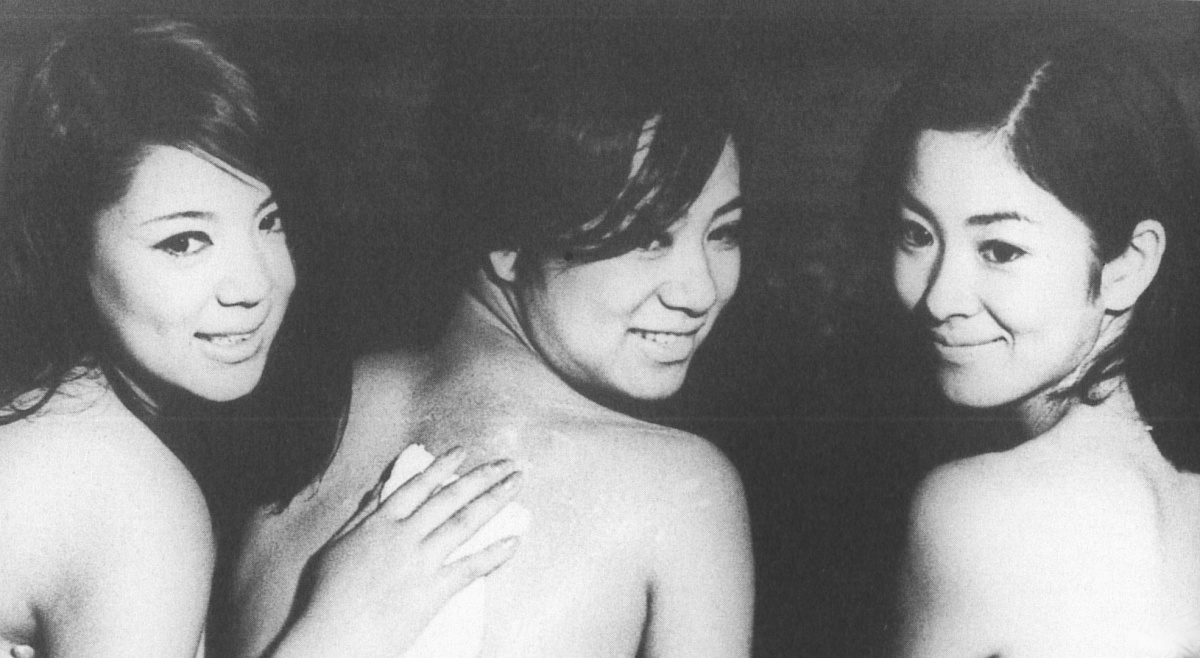
[still from Hot Springs Massage Geisha, 1968]Last edited by Takuma; 04-14-2020, 08:48 AM.
Comment
-
“Pinky Violence: Toei's Bad Girl Films†(Sugisaku & Uechi, 1999) - Part 2
I've been reading book the “Pinky Violence: Toei's Bad Girl Films†(æ±æ˜ ピンã‚ー・ãƒã‚¤ã‚ªãƒ¬ãƒ³ã‚¹æµªæ¼«ã‚¢ãƒ«ãƒãƒ ) (1999). I'll try to summarize a few highlights. My translations may not be entirely accurate.
About Producers Okada and Amao, Toei Going Pink (2/3):
At Toei Kyoto studios assistant directors protested against Teruo Ishii's Abnormal Love series in April 1969. The media took notice and a big controversy ensued. In a 1969 interview by Kinema Junpo Okada responded to film critic Eiichi Takahashi's criticism that “Toei might hurt its image by making anti-cultural and socially unhealthy moviesâ€. Okada said “Toei isn't receiving any money from the government. People can say what they want, but all Toei's got is its spirit of freedom, and will proceed independently. There are people who criticize Toei for making ero-guro films, but that's not how I see it. The trends are changing and the system must change as well. With the television taking its share of the audiences, we cannot entertain viewers if we keep doing films in the old way.â€
Regarding the protest by assistant directors, Okada says “I don't really understand that. They are free to come to me and say they don't want to work on this kind of film. They protested just because they were jealous of Ishii. That protest wasn't any kind of act of braveryâ€.
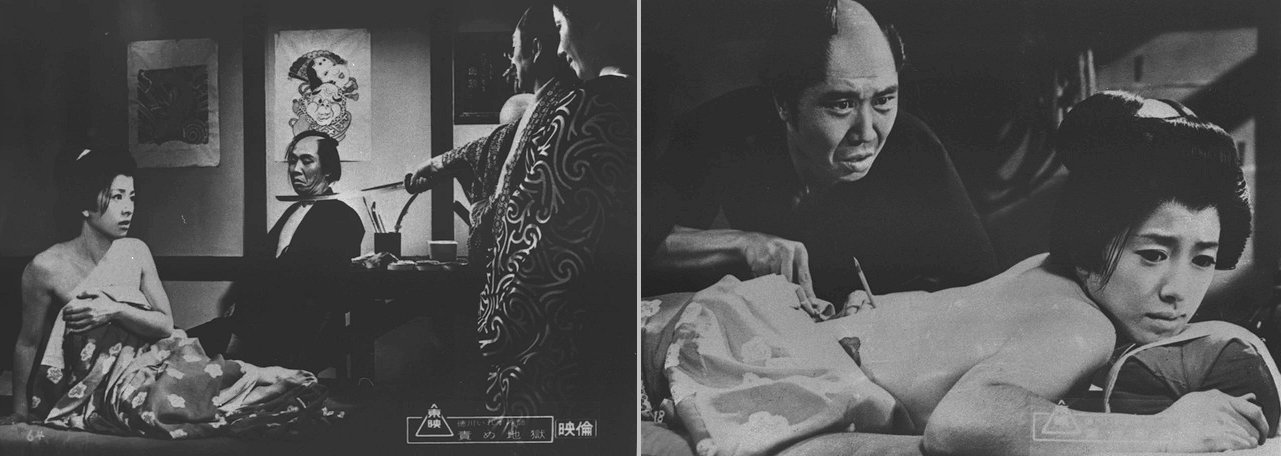
[two stills from Inferno of Torture]Last edited by Takuma; 04-14-2020, 08:47 AM.
Comment
-
“Pinky Violence: Toei's Bad Girl Films†(Sugisaku & Uechi, 1999) - Part 3
I've been reading the book “Pinky Violence: Toei's Bad Girl Films†(æ±æ˜ ピンã‚ー・ãƒã‚¤ã‚ªãƒ¬ãƒ³ã‚¹æµªæ¼«ã‚¢ãƒ«ãƒãƒ ) (1999). I'll try to summarize a few highlights. My translations may not be entirely accurate.
About Producers Okada and Amao, Toei Going Pink (3/3):
“She [Reiko Ike] had an even more gorgeous body than was expected, and she was enthusiastic to become an actress, the only problem was that she was 16 years old. Mr. Amao made her an adult in her resume, which was a complete fabrication.â€
“Ike was billed as the 'First Japanese Porno Actress' [in the advertising materials for Hot Springs Mimizu Geisha]. Naturally this sparked many questions from reporters. Ike gave them answers prepared [by Amao] in advance. In this sense, it could be said she became a star under Toei's full control.â€
“She immediately caught the attention of men (and their crotches) [sic], but her big break would not have been possible without producer Amao's information strategyâ€.
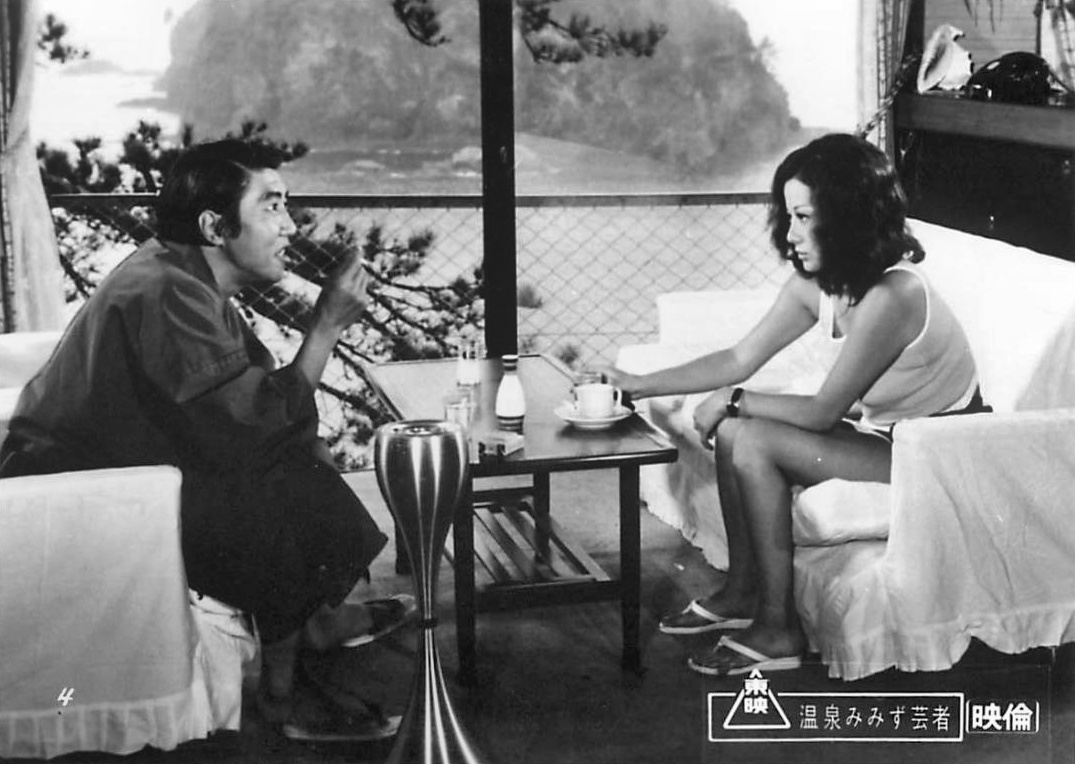
Comment
-
Highlights from “Pinky Violence: Toei's Bad Girl Films†(Sugisaku & Uechi, 1999) - Part 4
I've been reading book the “Pinky Violence: Toei's Bad Girl Films†(æ±æ˜ ピンã‚ー・ãƒã‚¤ã‚ªãƒ¬ãƒ³ã‚¹æµªæ¼«ã‚¢ãƒ«ãƒãƒ ) (1999). I'll try to summarize a few highlights. My translations may not be entirely accurate.
About the controversy regarding Teruo Ishii's Abnormal Love series
While History of the Shogun's Harem (å¾³å·å¥³ç³»å›³) (1968) was the big hit, its release was met with great public uproar. It was called “gender discrimination†and “insult towards womenâ€. PTA and women's organizations raged against it in the media.
In November 1968 Kinema Junpo critic Tadao Sato wrote that “Japanese cinema had hit the rock bottom†with The Joy of Torture (å¾³å·å¥³åˆ‘ç½°å²) (1968). “History of the Shogun's Harem was awful, but this is even worse. It's the worst. The only way to go lower that this would be a live ero show†he said and continued describing it as insulting and nauseating.
On April 14, 1969, during the production of Inferno of Torture (å¾³å·ã„ã‚Œãšã¿å¸«ã€€è²¬ã‚地ç„), 24 assistant directors issued a joint statement that was posted on a union bulletin board at Toei Kyoto Studios. They condemned the Abnormal Love series, saying it “focuses on nothing but abnormality, cruelty and perversionsâ€, “loses sight of the essence of cinemaâ€, and “is nothing but shameless money making by Toeiâ€. Furthermore, “the series is hurting the social evaluation of cinema [as art] and is progressing the downfall of cinemaâ€. “These films are harmful for the mental wellbeing of us, the filmmakers who have to participate in making them.†“We will strive to end the production of such films from now onâ€.
[The incident was further fuelled by the actress change in Inferno of Torture: original lead Teruko Yumi took off in the middle of filming, and was replaced by Yumiko Katayama].
The media immediately picked up the incident, but the controversy eventually lead nowhere because the assistant directors weren't fully united. One of them, Misao Arai, ended up making his own directorial debut with another entry in the series, Hot Springs Pimp Geisha (温泉ãƒãƒ³å¼•å¥³ä¸) (1969) some months later [it's mentioned elsewhere in the book that Ikuo Sekimoto was also among those assistant directors].
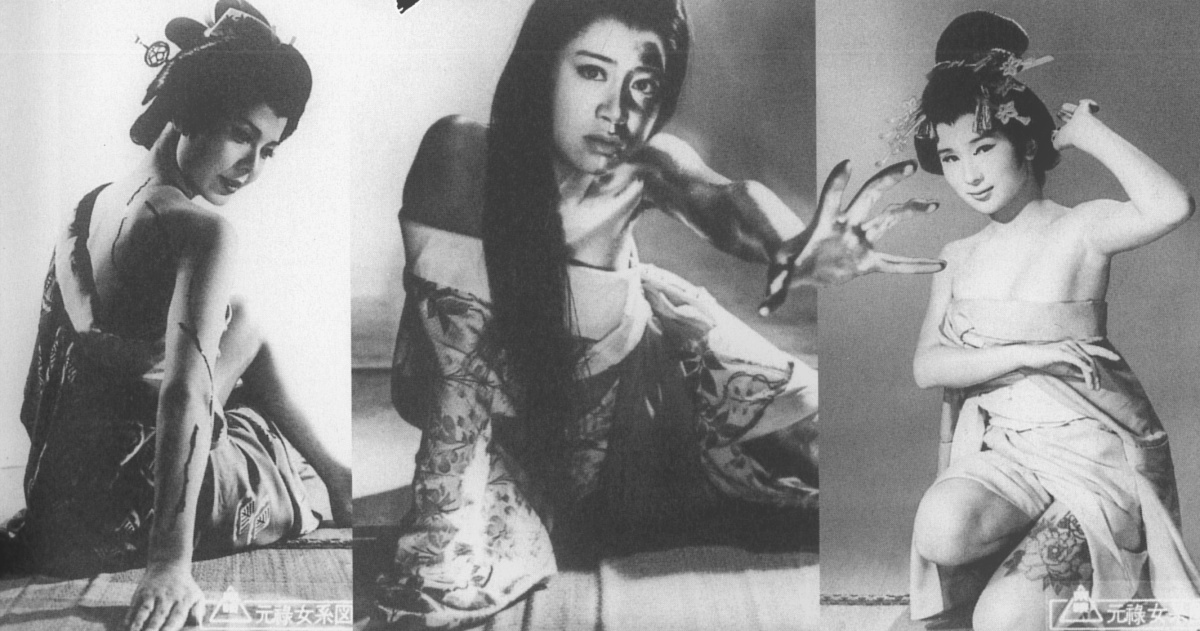
[stills from Orgies of Edo]
Comment
-
Highlights from “Pinky Violence: Toei's Bad Girl Films†(Sugisaku & Uechi, 1999) - Part 5
I've been reading book the “Pinky Violence: Toei's Bad Girl Films†(æ±æ˜ ピンã‚ー・ãƒã‚¤ã‚ªãƒ¬ãƒ³ã‚¹æµªæ¼«ã‚¢ãƒ«ãƒãƒ ) (1999). I'll try to summarize a few highlights. My translations may not be entirely accurate.
About the Abnormal Love Series Controversy (from Ishii interview)
Sugisaku: “History of the Shogun's Harem (å¾³å·å¥³ç³»å›³) (1968) was quite sensational when it came out with all the naked women in itâ€.
Ishii: “People were angry about it, weren't they? The aunties of rice spoon union [refers to Housewives Union, lol] called it an 'insult towards women' â€.
--------
Sugisaku: "The storyline in History of the Shogun's Harem would hold even if there was no nudity."
Ishii: “Yes. But, but what the company [Toei] wanted me to do was to 'Show off a legion of pink actresses on the grand screen and destroy the competition of petty (independent) pink companies!'â€
--------
Sugisaku: “Film critic Tadao Sato criticized you strongly for making The Joy of Torture (å¾³å·å¥³åˆ‘ç½°å²) (1968).â€
Ishii: “I objected to it. I wrote to Kinema Junpo that Tadao Sato is the definition of a bigot!â€
--------
Sugisaku: â€Ikuo Sekimoto participated in writing Female Yakuza Tale...â€
Ishii: “I think most of it was [written by Masahiro] Kakefuda. I probably met Sekimoto only once. Back then I had been hated by all the assistant directors [the 1969 joint statement against the Abnormal Love series signed by 24 assistant directors] for the line of films I had made. I was in Kyoto drinking with producer Kanji Amao, and before I knew it there was this unknown guy with us constantly saying he's sorry. When I asked Amao who was that, he said “that guy is Sekimoto, he was at the forefront of the anti [Abnormal Love] movement.â€
[Sekimoto would go on to direct Girl Boss: Diamond Showdown, The Story of a Nymphomaniac, and even a couple of Roman Porno films]
[Note: the above items were picked from different parts of the interview, and were not subsequent questions]
 Last edited by Takuma; 04-21-2020, 01:26 AM.
Last edited by Takuma; 04-21-2020, 01:26 AM.
Comment
-
Highlights from “Pinky Violence: Toei's Bad Girl Films†(Sugisaku & Uechi, 1999) - Part 6
I've been reading the book “Pinky Violence: Toei's Bad Girl Films†(æ±æ˜ ピンã‚ー・ãƒã‚¤ã‚ªãƒ¬ãƒ³ã‚¹æµªæ¼«ã‚¢ãƒ«ãƒãƒ ) (1999). I'll try to summarize a few highlights. My translations may not be entirely accurate.
About Teruo Ishii's Way of Making Films (interview)
Sugisaku: “You made many episode films that contained 'a bit of this and a bit of that.' â€
Ishii: â€That's right. I don't like having a consistent tone from beginning to end.â€
Sugisaku: †[Screenwriter Masahiro] Kakefuda said “It was tough writing for Ishii because I had to write three screenplays and the condense them into one!†“
Ishii: “That's true.â€
Sugisaku: “Did he only get paid for one script?â€
Ishii: “Yes. But the films got better [when made] that way. Normally when someone came up with good idea, you'd build an entire movie around it. But I didn't want to do that. I wanted to go straight to the climax. To put it bluntly, I wanted my movies to be nothing but climaxesâ€.
Sugisaku: “Your films always started with a shocking climax. Did it take a lot of time to write them?“
Ishii: “No, I'm really fast. When I write, I write so fast I get names and grammar wrong. Someone will fix them laterâ€.
[Note: although Kakefuda was the main writer on most of Ishii's Abnormal Love films starting from Orgies of Edo, Ishii is listed as the 2nd writer on those. Ishii himself was a highly experienced writer, having written nearly all of his older movies alone.]
[From Teruo Ishii interview]
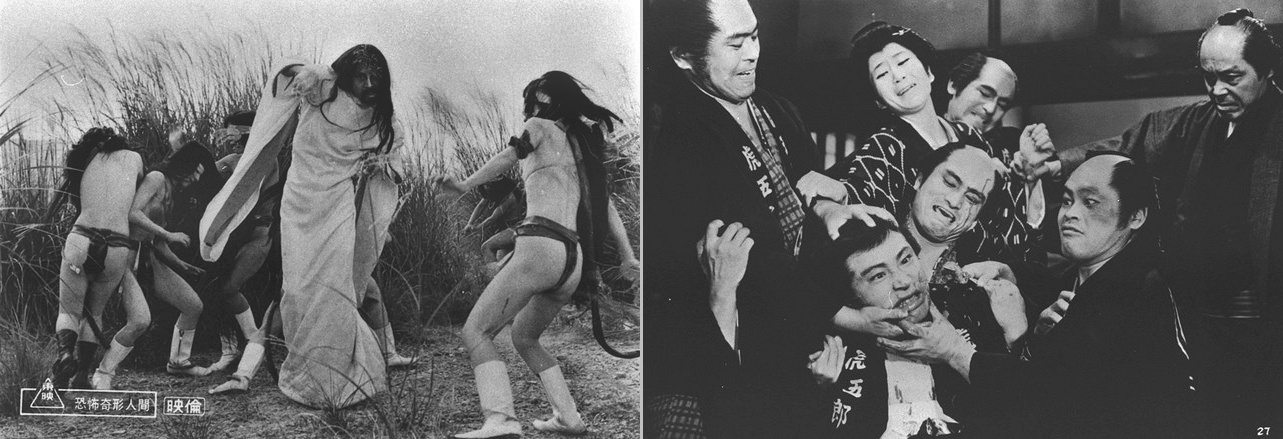
[stills from Horror's of Malformed Men and Yakuza Law]
Comment
-
Highlights from “Pinky Violence: Toei's Bad Girl Films†(Sugisaku & Uechi, 1999) - Part 7
I've been reading the book “Pinky Violence: Toei's Bad Girl Films†(æ±æ˜ ピンã‚ー・ãƒã‚¤ã‚ªãƒ¬ãƒ³ã‚¹æµªæ¼«ã‚¢ãƒ«ãƒãƒ ) (1999). I'll try to summarize a few highlights. My translations may not be entirely accurate.
About Asao Koike, Sada Abe, Tatsumi Hijikata (Teruo Ishii interview)
Sugisaku: “Asao Koike was a regular [in the Abnormal Love series]. I read an interview where he said he became impotent after having appeared in too many movies like this! (laughs)â€
Ishii: “His background was in the shingeki theatrical movement (新劇). I never liked shingeki. But Koike was an exception. The word “actor†was a pitch perfect description of him. After he passed away, I received a letter from his wife saying Koike felt he had given his most self-assured performance in The Joy of Torture (å¾³å·å¥³åˆ‘ç½°å²) (1968)â€.
Sugisaku: “That's awesome. Pinky Violence was a good place for him to demonstrate his strengths as an actor.â€
Ishii: “He performed with his eyes, didn't he? And when I said “Koike-chan, I'd like your teeth a little dirtier†he put grease paint on them. He seemed pleased, too. He certainly had guts. In Horrors of Malformed Men (江戸å·ä¹±æ©å…¨é›†ã€€æ怖奇形人間) (1969) he dressed up as a woman. He said “I wanna do that!†In that film, there was also a Butoh dancer [Tatsumi Hijikata]. Koike was really excited about it and came to see when we filmed the opening scene at a beach although it was very cold. “This is really interesting†he said.â€
--------
Sugisaku: “It must have been hard to get the real Sada Abe to appear in Love and Crime (明治大æ£æ˜å’Œã€€çŒŸå¥‡å¥³çŠ¯ç½ªå²) (1969)â€.
Ishii: “It was. I was chasing the impossible and I was afraid I'd scare her away if I tried to force her to act, so I just told her to say anything and then I shot it [from distance] with a telephoto lens at the Azuma Bridge.â€
Sugisaki: “Was Abe a forgotten figure back then?â€
Ishii: No, no. She was a character from the past, but everyone knew her case. The newspaper coverage was amazing. When she came to a press conference at the filming site, the reporters were taking so many photos her face turned pale. “Did I do something bad†she said. Koike and Hijikata were there too. Hijikata said “how beautiful!â€.
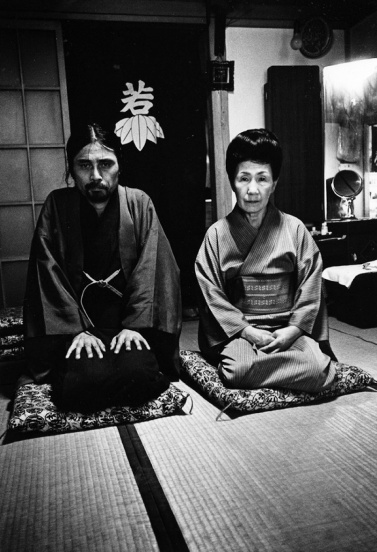
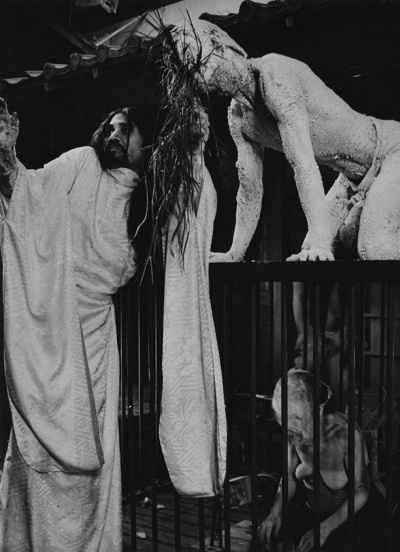
[photos: Tatsumi Hijikata and Sada Abe + Hijikata in Horrors of Malformed Men.
Photo source: 肉体ã®å›ä¹±>以å‰/以後 : アブジェクシオンã¨ã—ã¦ã®åœŸæ–¹å·½ã®èˆ žè¸
http://koara.lib.keio.ac.jp/xoonips/...00000025-0105]
Comment
-
It's (still sort of) Golden Week, so here is a double feature ad for Toei's 1972 Golden Week release Tokugawa Sex Ban (å¾³å·ã‚»ãƒƒã‚¯ã‚¹ç¦æ¢ä»¤ã€€è‰²æƒ…大å) and Delinquent Boss: Moving Against the Stray Dog (ä¸è‰¯ç•ªé•·ã€€ã®ã‚‰çŠ¬æ©Ÿå‹•éšŠ).
Do note the irony: Delinquent Boss: Moving Against the Stray Dog was Reiko Ike's last movie at Toei before she left the company to pursue an idol career (only to come back a few months later) while Tokugawa Sex Ban became Miki Sugimoto's first starring role precisely because Ike left. Suzuki wrote in his book (æ±æ˜ ゲリラ戦記, 2013) that Tokugawa Sex Ban was supposed to star Ike, but she left Toei when the film was in pre-production so they replaced her with Sugimoto.
It was written in Hotwax Vol. 8 (日本ã®æ˜ ç”»ã¨ãƒãƒƒã‚¯ã¨æŒè¬¡æ›² Vol.8, 2007) that Tokugawa Sex Ban premiered in more than 200 theatres on the Golden Week! (*) Which sounds incredible for an “adult filmâ€. That's like a Marvel release these days! Another interesting thing that is mentioned is that the film's storyline (a shogun forbids anyone to have sex) was intended as satire. Early 1972 is when the big Roman Porno trial begun when the police confiscated 4 Roman Porno films and the filmmakers (and Eirin employees who had passed the film) were charged for breaking the obscenity laws.
* It says 「ãƒãƒ«ãƒŽå¤§ä½œã¨éŠ˜æ‰“ãŸã‚Œã€ã‚´ãƒ¼ãƒ« デンウィークã«å°åˆ‡ã‚‰ã‚ŒãŸãŒã€ã“ã®ã‚ ˆã†ãªæ˜ ç”»ãŒå…¨å›½äºŒç™¾é¤¨ä»¥ä¸Šã®æ˜ 画館ã§å°åˆ‡ã‚‰ã‚Œã€ã—ã‹ã‚‚ヒットã—ãŸã ¨ã„ã†äº‹å®ŸãŒã™ã°ã‚‰ã—ã„。ã€. The word å°åˆ‡ really should refer to opening weekend premiere, though I'm still having slight doubts considering the cost of making over 200 film prints.
※[ad scan source: https://twitter.com/TOKI_darna]
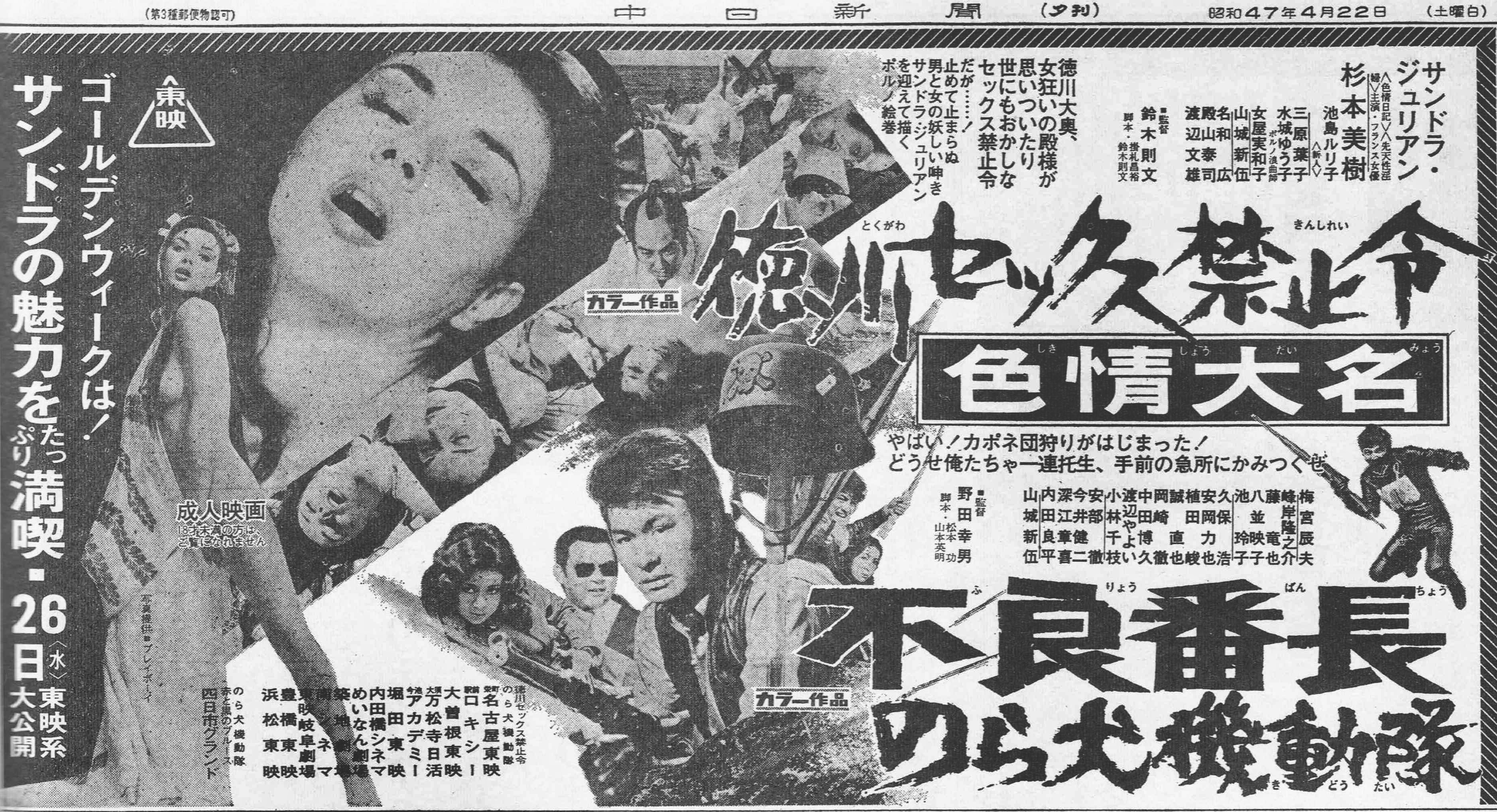 Last edited by Takuma; 05-07-2020, 02:53 AM.
Last edited by Takuma; 05-07-2020, 02:53 AM.
Comment
-
Highlights from “Pinky Violence: Toei's Bad Girl Films†(Sugisaku & Uechi, 1999) - Part 8
I've been reading the book “Pinky Violence: Toei's Bad Girl Films†(æ±æ˜ ピンã‚ー・ãƒã‚¤ã‚ªãƒ¬ãƒ³ã‚¹æµªæ¼«ã‚¢ãƒ«ãƒãƒ ) (1999). I'll try to summarize a few highlights. My translations may not be entirely accurate.
Random funny bits from Teruo Ishii interview
Ishii: “I wanted that scene [the big ending fight in Bohachi Bushido] to feel like ballet.â€
Sugisaku:â€In director [Ishii]'s ballet arms and legs are flying through the airâ€.
--------
Sugisaku: “Could you tell us about Shameless: Abnormal and Abusive Love (異常性愛記録 ãƒãƒ¬ãƒ³ãƒ) (1969)â€
Ishii: “That film is mostly a true story! A bar mama [proprietress] was telling me about what had happened to her and I wrote it down. “
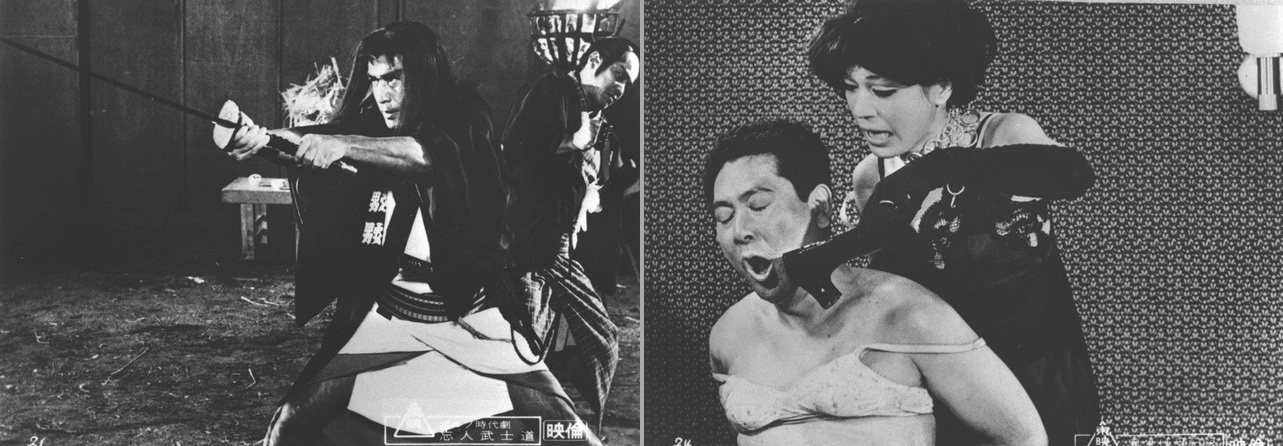
Just an observation: I don't think Ishii mentioned about it, but I felt Shameless:Abnormal and Abusive Love (異常性愛記録 ãƒãƒ¬ãƒ³ãƒ) (1969) had a really strong mondo documentary vibe to it. The Italian mondo docs had been super popular in Japan throughout the 60s. Sadao Nakajima also directed a bunch of mondo style Japanese sex docs. The 1st one of them was Nippon 69 Sexual Curiosity Seeking Zoneã«ã£ã½ã‚“'69 セックス猟奇地帯 (1969), which came out 5 weeks before Shameless and contains an almost identical dominatrix scene that is also found (as fictionalized version with Maki Carrousel) in Ishii's film. There's a lot of documentary feel to the club scenes as well.
Comment
-
There's an interview with screenwriter Masahiro Kakefuda in Hotwax Vol. 8 (日本ã®æ˜ ç”»ã¨ãƒãƒƒã‚¯ã¨æŒè¬¡æ›² Vol.8, 2007). I'll try to summarize a few highlights. My translations may not be entirely accurate.
About Working on Teruo Ishii's Abnormal Love series
Hotwax: “Did the atmosphere change at Toei Kyoto after the Abnormal Love line became a hit?â€
Kakefufa: “Yes, the more we made them, the more there was resistance [from colleagues]â€.
Hotwax: “Did you also get your share [of the criticism]?â€
Kakefuda: “Yes. There was bad talk on the sets. But when those young assistant directors who were vocal about this line [the 1969 joint statement against the series] made their own directorial debuts, they ended up making the same kind of films.â€
Hotwax: “There had not been anyone like the strong willed Ishii at the Kyoto Studios before after all.â€
Kakefuda: “When I first met Ishii, it was in a guest house next to the Kyoto studios. Actress Reiko Mikasa was lying naked on the floor and being tattooed by Seiji Mori [note: a tattoo artist who worked on many films]. I thought to myself, Toei Kyoto has changed a lot! Also, when I wrote the 1st draft for Inferno of Torture, Ishii took some good [shocking] scenes from the middle of the story and placed them in the beginning. “
Hotwax: “Opening the grave and cutting open the belly…â€
Kakefuda: “I had to raise the voltage even higher for the film's 2nd half because of that. There was no such tradition of filmmaking at Toei or any other studios at the time, connecting just the best scenes [into a single movie]. I learned that Ishii had dropped out of high school and spent all his time watching movies. That's where his ideas and way of organizing movies came from. Norifumi Suzuki was also like that. After all, you can't make interesting movies if you haven't watched a lot of films.â€
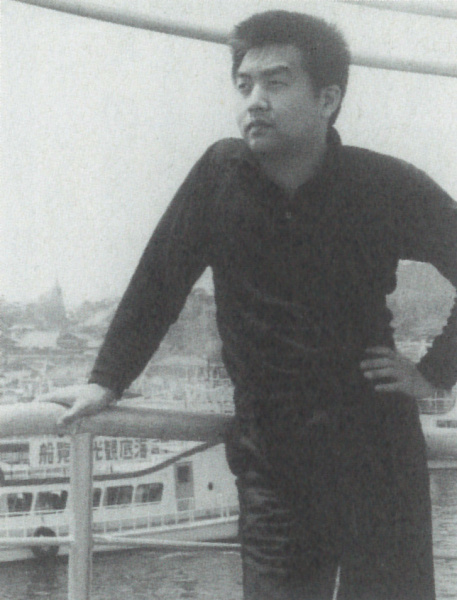
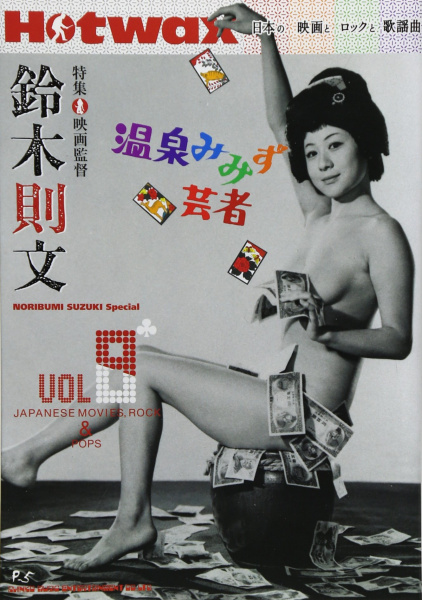
Comment
-
Here's another interesting bit from screenwriter Masahiro Kakefuda interview in Hotwax Vol. 8 (日本ã®æ˜ ç”»ã¨ãƒãƒƒã‚¯ã¨æŒè¬¡æ›² Vol.8, 2007)
Hotwax: “You wrote Sister Street Fighter (女必殺拳) (1974) with Norifumi Suzuki. Was Kazuhiko Yamaguchi always meant to direct it?â€
Kakefuda: “No, it was originally Suzuki. But it seems he was busy with another project. Yamaguchi did so well with the film that he was made the director for the next film, too. Originally the series was supposed to run longer, but for some reason the company [Toei] decided to change the director and writer and the series eventually came to a dull end.â€
Of course, there might have been something at fault with Kakefuda himself... the interviewer actually says next "I'm sorry if I'm rude, but it was the same storyline in all three films". To which Kakefuda replied "it was pretty difficult coming up with new strange bad guys and what to smuggle each time". Perhaps he could have come up with a different storyline, haha.
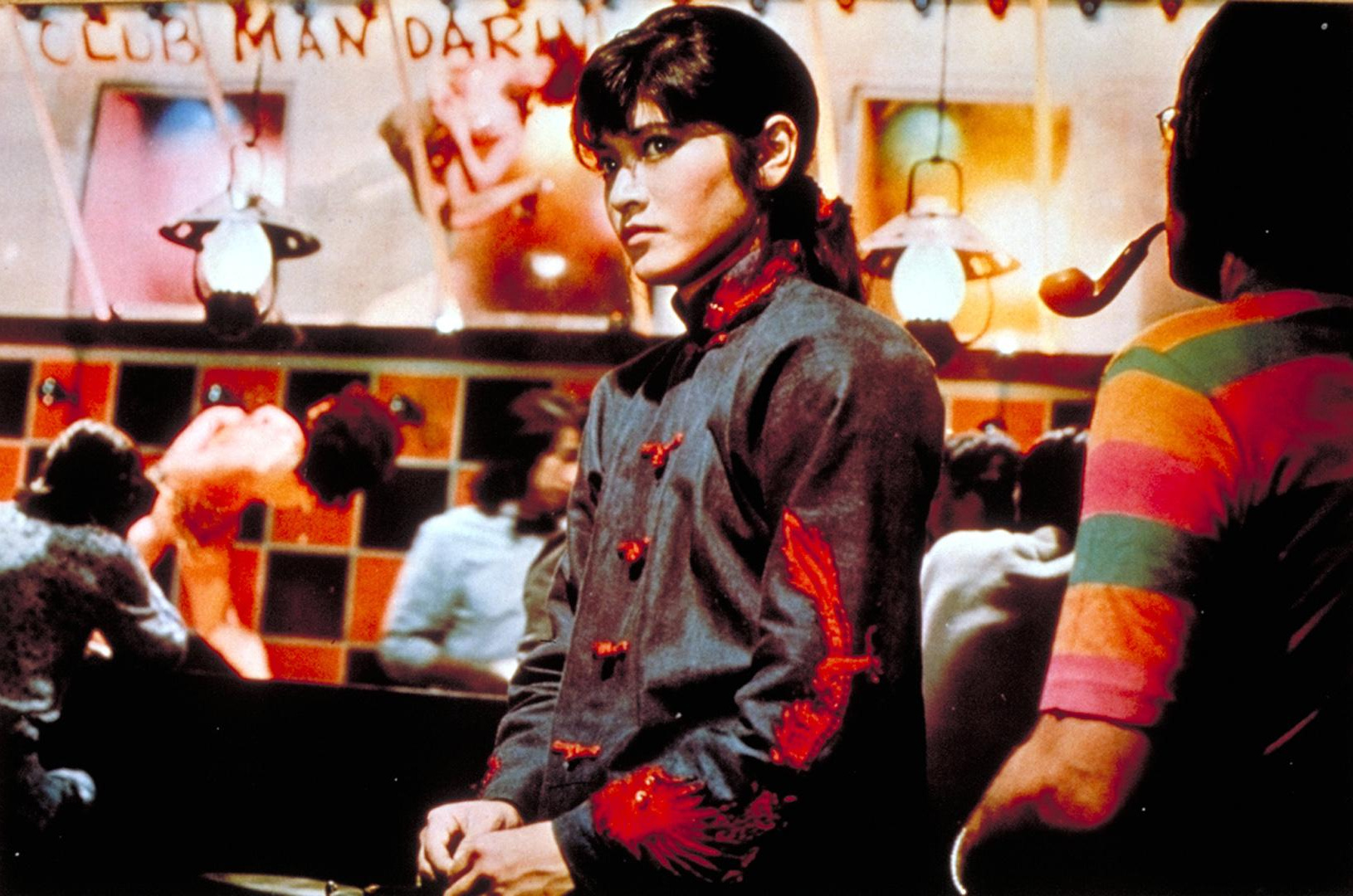
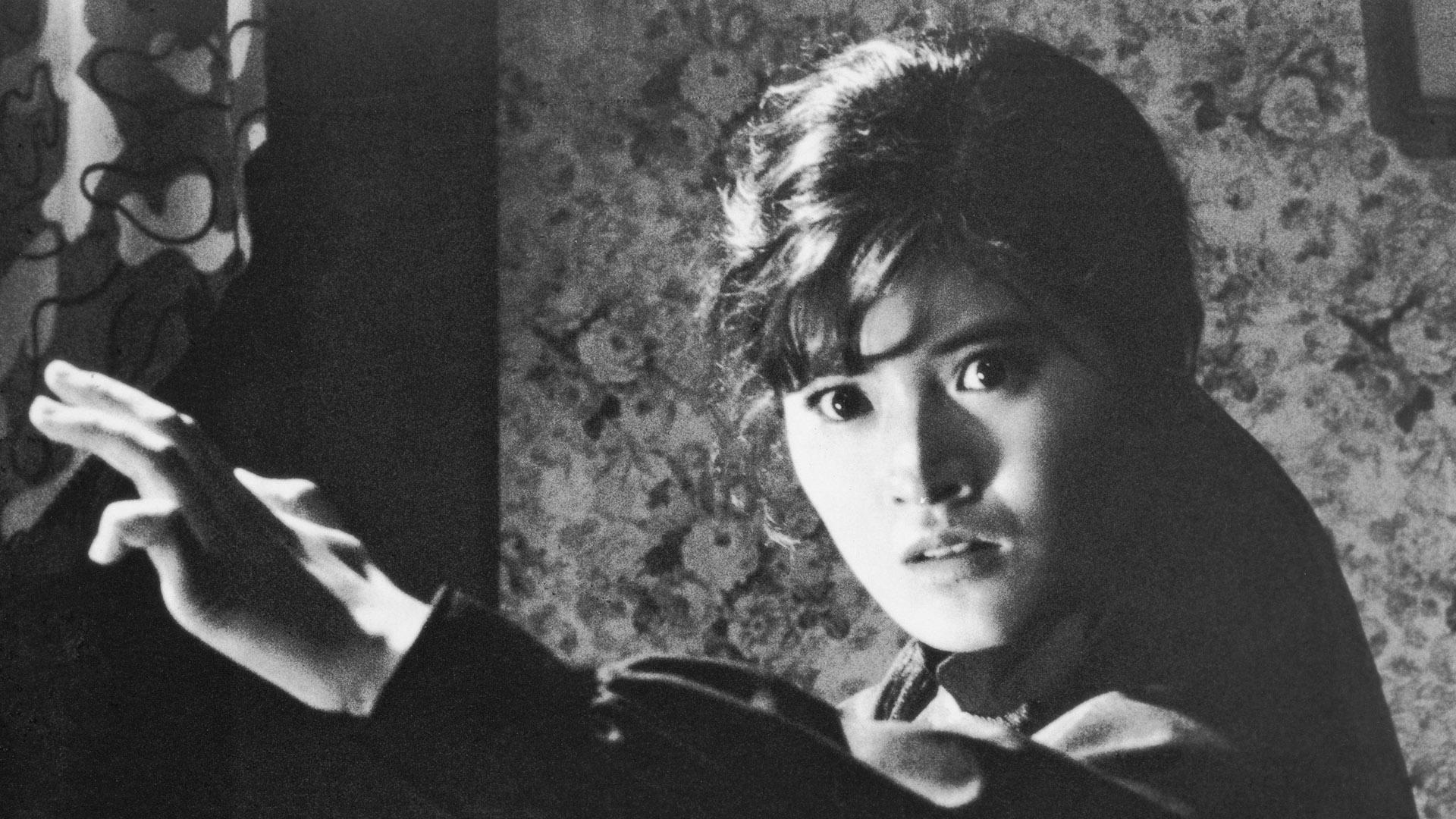
Comment
-
Highlights from “Pinky Violence: Toei's Bad Girl Films†(Sugisaku & Uechi, 1999) - Part 9
I've been reading the book “Pinky Violence: Toei's Bad Girl Films†(æ±æ˜ ピンã‚ー・ãƒã‚¤ã‚ªãƒ¬ãƒ³ã‚¹æµªæ¼«ã‚¢ãƒ«ãƒãƒ ) (1999). I'll try to summarize a few highlights. My translations may not be entirely accurate.
Reiko Ike and Bruce Lee
Here's another great story from the book. Uechi writes that while karate films were popular in the mid 70s, the biggest name in martial arts was nevertheless Bruce Lee. Enter the Dragon was the first Lee film that got released in Japan (Dec. 1973) and the others followed in 1974-1975. The Japanese distributor for the Lee films was Toho-Towa. However, somehow Toei managed to get the rights to The Way of the Dragon (ドラゴンã¸ã®é“) (Japan release: Jan. 1975).
Uechi writes that Golden Harvest president Raymond Chow was looking to start a line of erotic films, and he seems have been very fond of Toei's Reiko Ike. It was even said that Ike could become the “Female Bruce Lee†[the reference is unclear or I just don't get it, but I don't know who said this]. So Ike got all excited and flew to Hong Kong. However, her Golden Harvest film The Bedevilled (悪é”ã®ç”Ÿé¦–) (HK release Jan 1975) turned out to be a “porno horror†after all. But it seems that this episode is how Toei managed to secure rights to The Way of the Dragon, as a return gift, despite Toho-Towa getting all the others.
This story is of course speculation. Some sort of connection seems to have existed between Toei and Golden Harvest already before, since Bruce Lee's co-star Nora Miao acted in Toei's Tokyo-Seoul-Bangkok Drug Triangle (æ±äº¬ï¼ã‚½ã‚¦ãƒ«ï¼ãƒãƒ³ã‚³ãƒƒã‚¯ã€€å®ŸéŒ²éº»è –¬åœ°å¸¯) (1973) and of course Angela Mao was the original star of Sister Street Fighter (女必殺拳) (1974) before she dropped out. Toei also tried to get Golden Harvest to co-produce The Street Fighter (æ¿€çªï¼ã€€æ®ºäººæ‹³) (1974) but failed (presumably because Toei's idea of “multi-cultural†was Sonny Chiba beating the crap out of foreign nationalities). But it sounds quite credible that after these failed attempts it was Ike's Golden Harvest gig that probably secured Toei the distribution rights to The Way of the Dragon, especially since the timeframe matches perfectly (both released Jan. 1975) and there must be a reason why Toho-Towa couldn't get this one film.
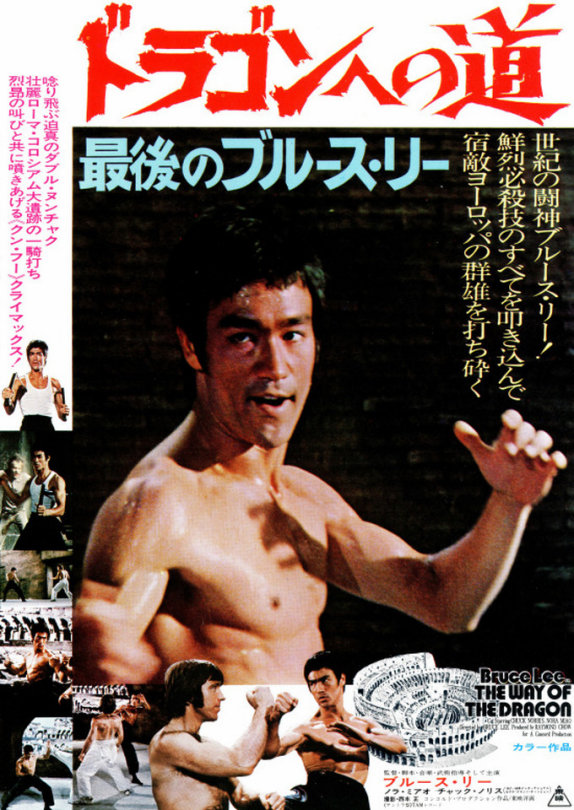
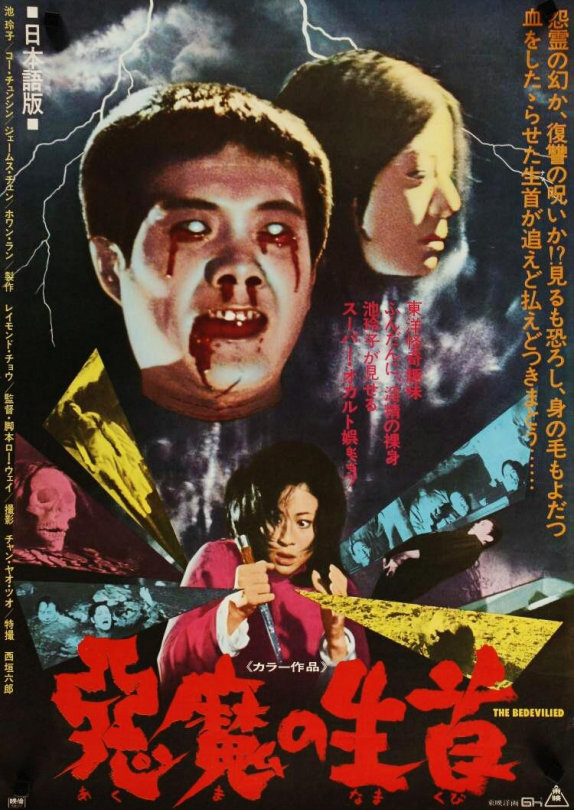
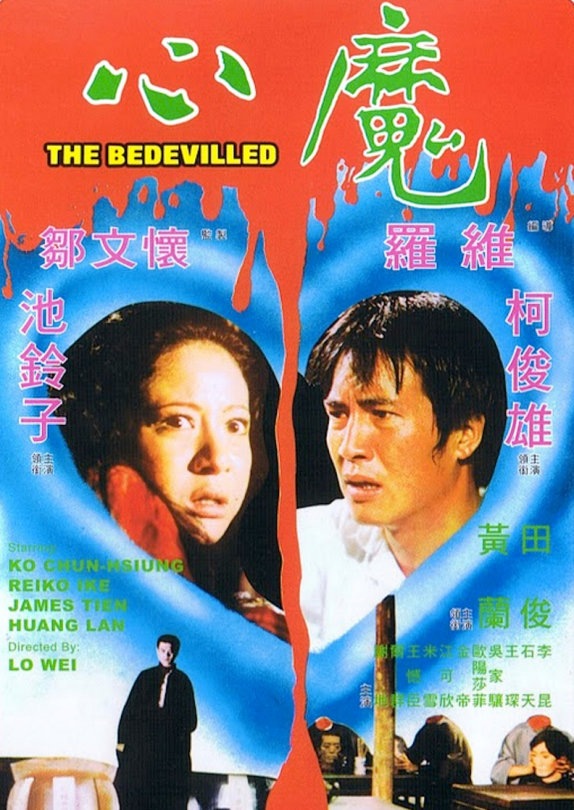
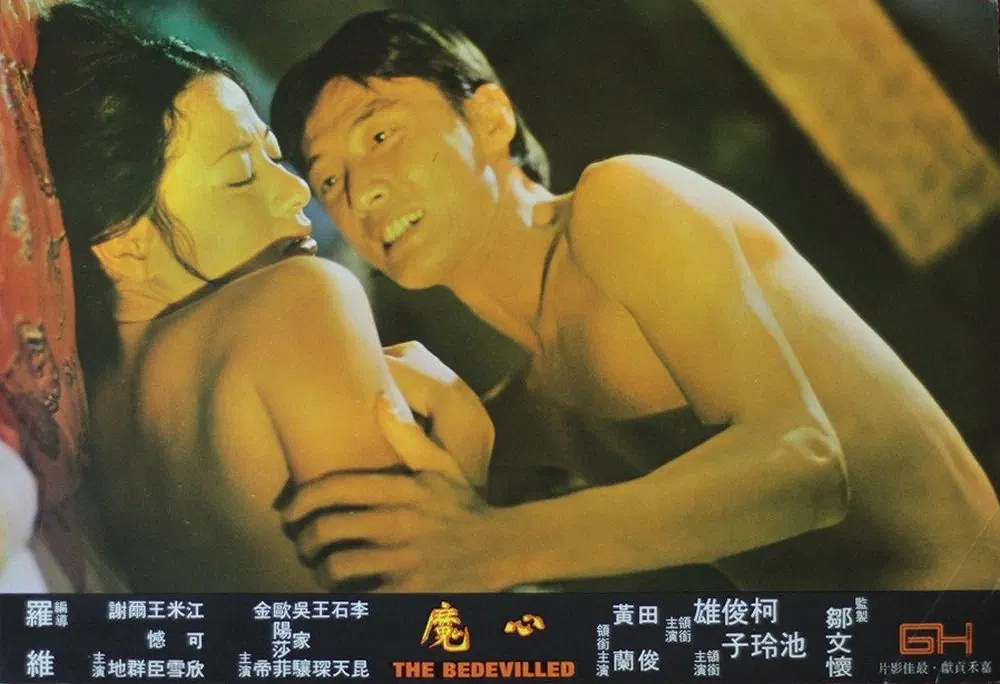
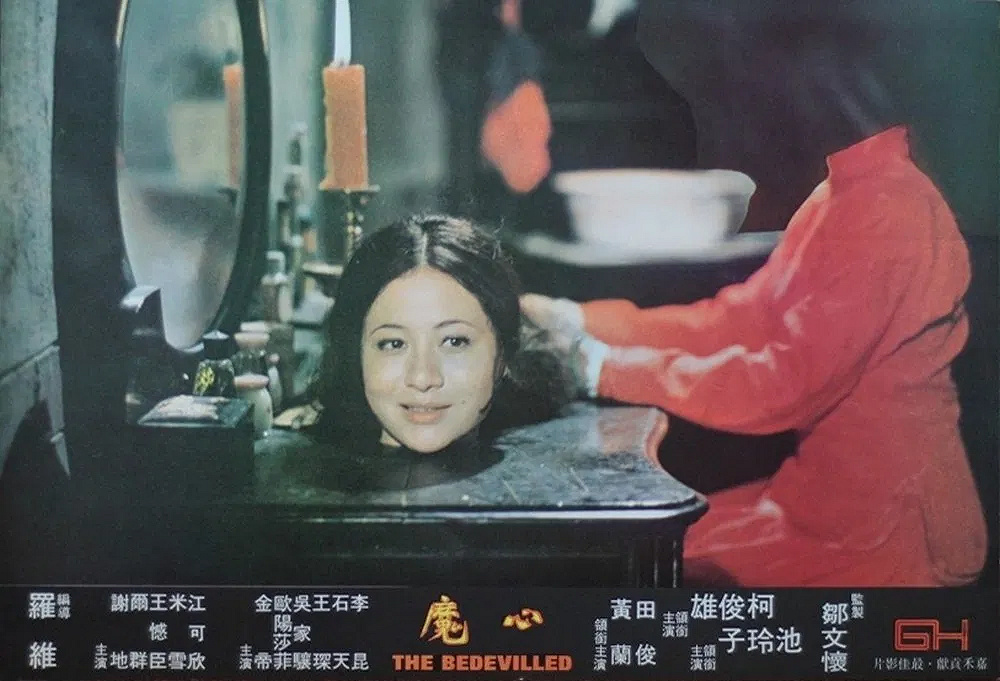 Last edited by Takuma; 05-14-2020, 02:00 AM.
Last edited by Takuma; 05-14-2020, 02:00 AM.
Comment
Comment